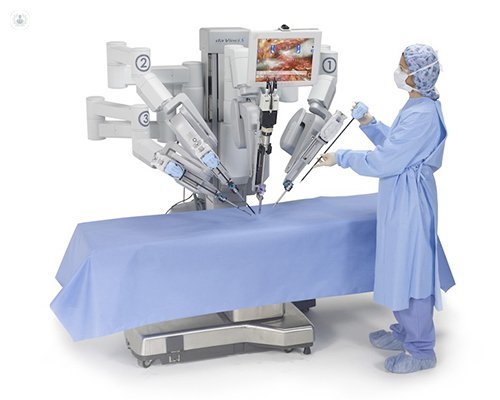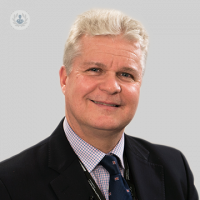Robot assisted surgery: how new technology creates opportunities in head and neck surgery
Written by:
What is Robotic Head and Neck Surgery?
Robotic head and neck surgery is one of the latest technological advances in surgery. This novel technology helps overcome restrictions present with conventional surgical techniques.
Surgery is not performed by a robot but by the surgeon using robotic technology. Robotic surgery permits access to small spaces and removes all natural hand tremor. It permits precision surgery in real time using a 3D visual field.

Why is robotic surgery used?
The da Vinci robot permits surgery on the tongue base and tonsils for cancer and obstructive sleep apnoea. The robot can be used to remove the thyroid or parathyroid gland in patients in selected patients wishing to avoid a scar in the neck. It is not suitable for all thyroid or parathyroid surgery.
- Surgery to the tongue base (cancer and sleep apnoea)
- Surgery to the tonsils (cancer)
- Removal of the thyroid (avoiding a neck scar)
- Selective parathyroid surgery where patients have a tendency to heal poorly and wish to avoid a neck scar
What are the benefits to using this procedure?
- Avoidance of a neck scar in thyroid and parathyroid surgery.
- Sleep apnoea where obstruction is at the base of tongue.
Suitable for patients where CPAP has failed or been refused and the patients BMI is not over 30. It is not possible to perform precision surgery of the tongue base by other surgical techniques either because they are too invasive or line of sight issues which occur with laser treatment. - No flaps (tissue grafts) are required for cancer surgery where inpatient stay is reduced from 3 weeks to 7 days.
- Permits less chemotherapy and radiotherapy when treating cancer. This leads to superior swallowing outcomes for the patient.
- Robotic head and neck surgery for tonsil and tongue base cancer reduces inpatient stay from 3 weeks to 7 days. This is better for patients and reduces the demand on healthcare resources.
What complications can occur with this procedure?
As with any surgical procedures there are risks such as bleeding and infection. However, the postoperative recovery is significantly helped by using robotic techniques.


